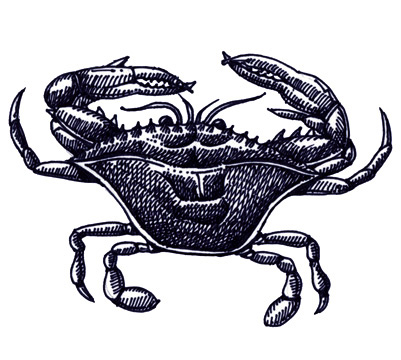

They are found from Canada to South America (Argentina).
They live in tidal pools and on the seabed.
They have a hard shell carapace that is blueish in color. They have 10 legs, 5 on each side. The first one is an enlarged claw.
During the winter, they bury themselves in the mud and grass beds. They wander the sea bottom searching for prey.
They will eat whatever they can find, including: fish, crabs, clams, snails, plants, and even dead fish.
Females lay eggs in a mass under their belly. They can lay up to 8 million eggs. Young egg sponges are orange and gradually turn to brown and then black as the sponge matures. These crabs are called "sponge crabs."
Kingdom: Animalia
Phylum: Arthropoda
Subphylum: Crustacea
Class: Malacostraca
Order: Decapoda
Infraorder: Brachyura
Family: Portunidae
Genus: Callinectes
Species: C. sapidus
When you research information you must cite the reference. Citing for websites is different from citing from books, magazines and periodicals. The style of citing shown here is from the MLA Style Citations (Modern Language Association).
When citing a WEBSITE the general format is as follows.
Author Last Name, First Name(s). "Title: Subtitle of Part of Web Page, if appropriate." Title: Subtitle: Section of Page if appropriate. Sponsoring/Publishing Agency, If Given. Additional significant descriptive information. Date of Electronic Publication or other Date, such as Last Updated. Day Month Year of access < URL >.
Amsel, Sheri. "Crab (Blue)" Exploring Nature Educational Resource ©2005-2024. December 13, 2024
< http://www.exploringnature.org/db/view/540 >

